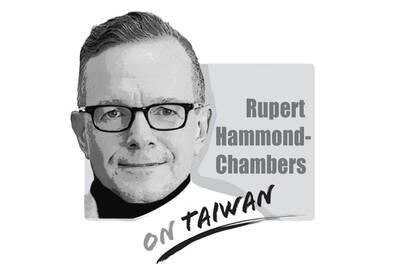The Department of Health has again seized a shipment of toxic foodstuffs imported from China, this time baking ammonia containing the industrial chemical melamine. Following the recent scandal over tainted milk, the incident has again put food safety in the spotlight.
Since the melamine scandal broke, we have heard officials explaining the matter in terms of concentrations or permissible amounts of the substance, but rarely do they approach the problem from the angle of risk assessment, management and communication. Originally the department announced that melamine was not an allowed food additive. However it adjusted its position by adopting Hong Kong’s standard of 2.5 parts per million (ppm) as the maximum allowable concentration in foodstuffs. In so doing, health officials in effect said that it is legal for foods to contain melamine.
Considering that it is banned as a food additive, the melamine content of food and drinks should be zero, no matter what kind of test equipment is used.
US Food and Drug Administration (FDA) documents state that the reference dose for the concentration of melamine, in the absence of other toxic substances, that can be safely consumed is 0.63 milligrams per kilogram of body weight per day (mg/kg bw-day). What this means is that if a person’s daily consumption of melamine is less than this then there is no appreciable risk to health.
If babies are fed 240g of infant formula containing 2.5ppm of melamine from birth until the age of two, and the average body weight of babies is 7.9kg, then the average daily consumption of melamine over two years will be 0.076mg/kg bw-day, only 12 percent of the FDA’s reference dose. Nevertheless, given that melamine is banned as a food additive, the allowable concentration of melamine in foodstuffs should be zero, or “not detectable.”
We hope that the government will set up a national risk assessment structure with decision-making powers. Only if a clear procedure and methods of risk assessment are laid out can we hope to handle incidents like the melamine scandal.
Chiang Chow-feng, Lan Yu-ching, Ling Ming-pei and Hsieh Hsien-tang are lecturers at the Department of Health Risk Management at China Medical University.
TRANSLATED BY JULIAN CLEGG

In the past month, two important developments are poised to equip Taiwan with expanded capabilities to play foreign policy offense in an age where Taiwan’s diplomatic space is seriously constricted by a hegemonic Beijing. Taiwan Foreign Minister Lin Chia-lung (林佳龍) led a delegation of Taiwan and US companies to the Philippines to promote trilateral economic cooperation between the three countries. Additionally, in the past two weeks, Taiwan has placed chip export controls on South Africa in an escalating standoff over the placing of its diplomatic mission in Pretoria, causing the South Africans to pause and ask for consultations to resolve
An altercation involving a 73-year-old woman and a younger person broke out on a Taipei MRT train last week, with videos of the incident going viral online, sparking wide discussions about the controversial priority seats and social norms. In the video, the elderly woman, surnamed Tseng (曾), approached a passenger in a priority seat and demanded that she get up, and after she refused, she swung her bag, hitting her on the knees and calves several times. In return, the commuter asked a nearby passenger to hold her bag, stood up and kicked Tseng, causing her to fall backward and
In December 1937, Japanese troops captured Nanjing and unleashed one of the darkest chapters of the 20th century. Over six weeks, hundreds of thousands were slaughtered and women were raped on a scale that still defies comprehension. Across Asia, the Japanese occupation left deep scars. Singapore, Malaya, the Philippines and much of China endured terror, forced labor and massacres. My own grandfather was tortured by the Japanese in Singapore. His wife, traumatized beyond recovery, lived the rest of her life in silence and breakdown. These stories are real, not abstract history. Here is the irony: Mao Zedong (毛澤東) himself once told visiting
When I reminded my 83-year-old mother on Wednesday that it was the 76th anniversary of the founding of the People’s Republic of China, she replied: “Yes, it was the day when my family was broken.” That answer captures the paradox of modern China. To most Chinese in mainland China, Oct. 1 is a day of pride — a celebration of national strength, prosperity and global stature. However, on a deeper level, it is also a reminder to many of the families shattered, the freedoms extinguished and the lives sacrificed on the road here. Seventy-six years ago, Chinese Communist leader Mao Zedong (毛澤東)